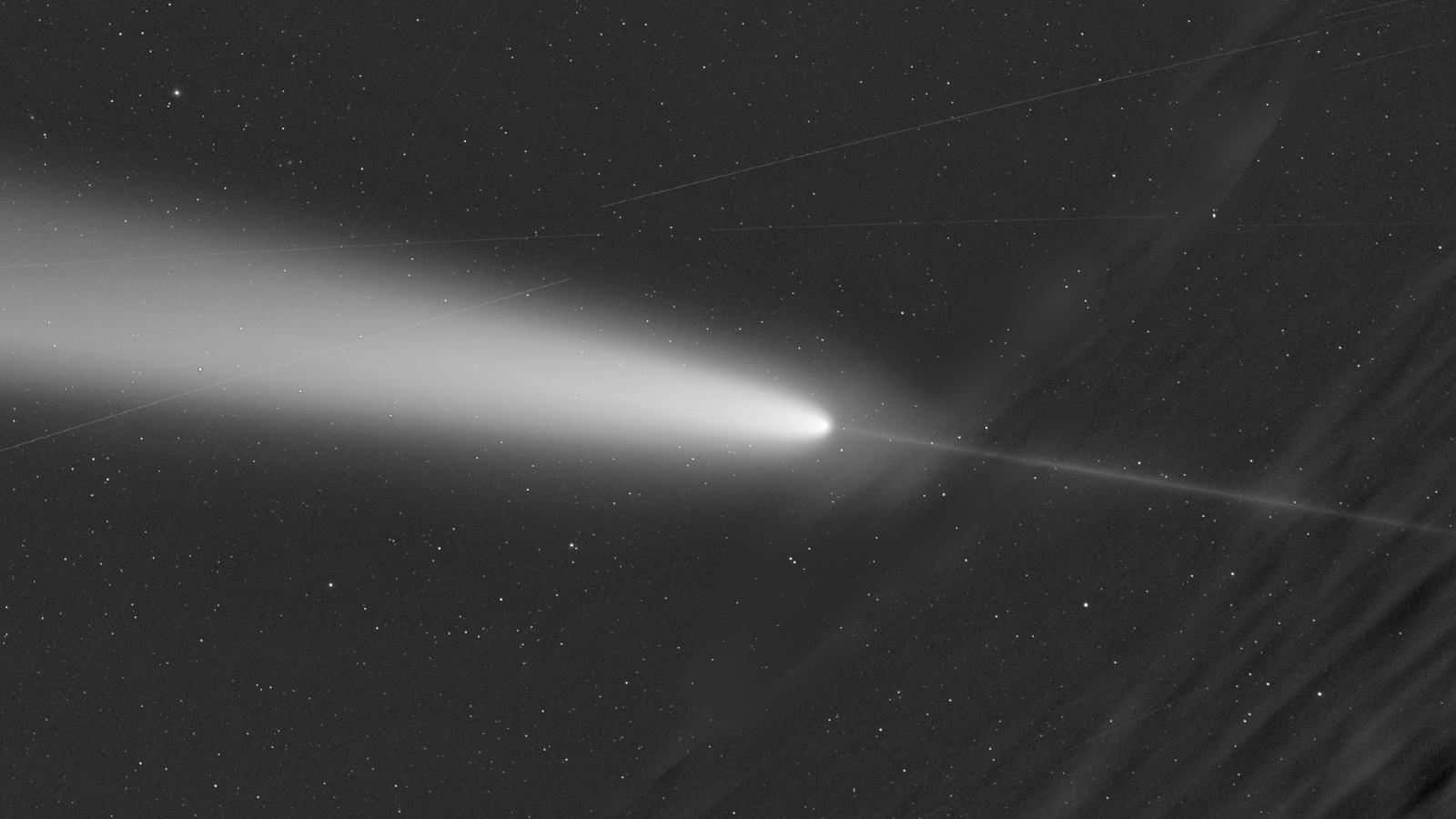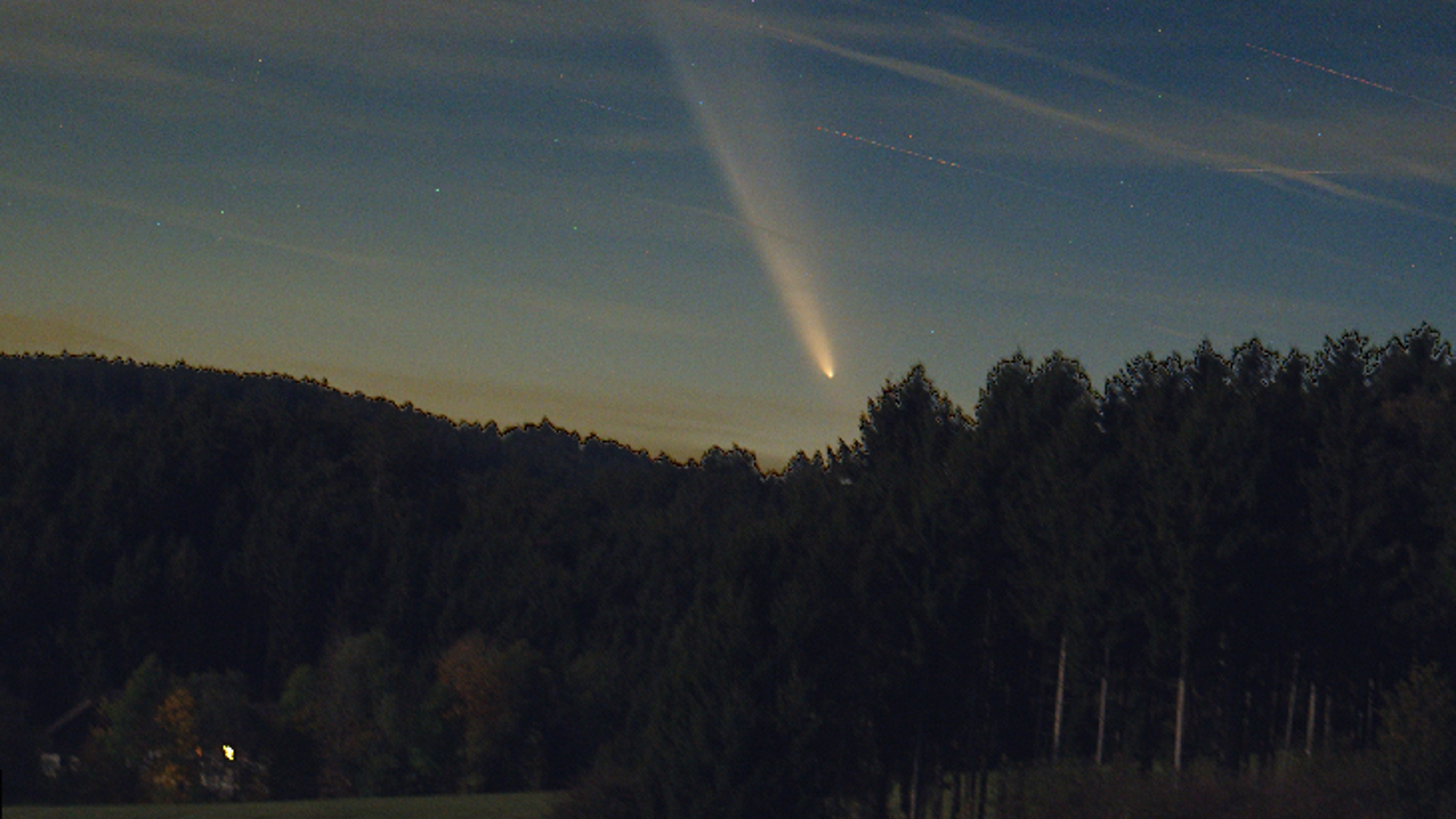
The "once-in-a-lifetime" comet Tsuchinshan-ATLAS looks like it has grown a physics-defying second tail after reaching its closest point to Earth for more than 80,000 years, new photos reveal. However, in reality, the extra limb is a visual illusion that occurs thanks to the position of our planet relative to the naked-eye object.
C/2023 A3, more commonly known as Tsuchinshan-ATLAS, is an unusually bright comet that likely originates from the Oort Cloud — a reservoir of icy objects in the outer reaches of the solar system. It was first discovered in early 2023 barreling between Saturn and Jupiter as it headed toward the inner planets. Follow-up observations revealed that the comet likely orbits the sun once every 80,660 years — and suggested that it may have been disintegrating, which later turned out to be inaccurate.
Tsuchinshan-ATLAS has been visible to the naked eye over the last few weeks after slingshotting around the sun in late September. However, it peaked in brightness over the last few days after reaching its closest point to Earth on Saturday (Oct. 12), when it was around 43.9 million miles (70.6 million kilometers) from our planet — around 180 times farther away from us than the moon. The comet was potentially visible to millions of people across large parts of the globe.
On Sunday (Oct. 13), astrophotographer Michael Jäger photographed Tsuchinshan-ATLAS streaking across the night sky near Martinsberg, Austria. In addition to showing the usually bright tail, enhanced versions of the photos revealed the comet had a fainter streak of light, known as an "anti-tail," coming off its body in the opposite direction, according to Spaceweather.com. On Monday (Oct. 14), Jäger captured another even clearer shot of the comet and its additional appendage (see above) and sent it to Live Science.
Related: See Mercury's giant, comet-like tail in stunning new image as it passes close to the sun

A comet's tail is made up of twin trails of dust and gas that are blown off the comet by solar radiation, meaning its tail always points away from the sun.
Anti-tails, therefore, seem to defy physics because they can be pointed toward the sun. However, these extra tails are not made of debris being blasted off the comet. Instead, they are made from dust that has recently been left behind by the comet in its orbital plane around the sun. When Earth passes through this plane, as it did over the weekend, this residual debris is illuminated by the sun and reflects back to Earth, giving the impression of a second tail.
Several other recent comets have also "grown" anti-tails as they passed by Earth. The most notable examples were the green comet C/2022 E3 (ZTF), which developed an anti-tail as it passed by Earth in January 2023, and Comet 12P/Pons-Brooks, a.k.a. the devil comet, which sprouted a second tail as it made its closest approach in June this year.
The chances of being able to see Tsuchinshan-ATLAS for yourself are quickly dwindling as the comet's brightness will soon fade as it moves away from Earth and back out toward the outer solar system. However, it should be possible to see the comet with a good pair of stargazing binoculars or a small telescope over the next few days. You can find when and where it is in the night sky using TheSkyLive.com.
There is also the possibility that a newly discovered, "sungrazer" comet could be visible to the naked eye later this month as it passes by Earth before a close slingshot around the sun. However, recent observations now suggest that it could break apart before it reaches us, Live Science's sister site Space.com reported.







